


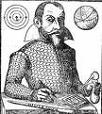









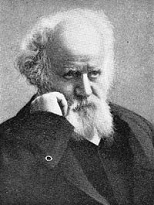
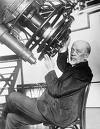





















TLW's Astronomerscope™ (Astronomer Historyscope) |
By T.L. Winslow (TLW), the Historyscoper™ |
© Copyright by T.L. Winslow. All Rights Reserved. |
Original Pub. Date: Jan. 8, 2017. Last Update: Mar. 14, 2024. |






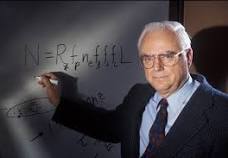
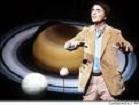


Westerners are not only known as history ignoramuses, but double dumbass history ignoramuses when it comes to astronomy and astronomer history. Since I'm the one-and-only Historyscoper (tm), let me quickly bring you up to speed before you dive into my Master Historyscope.
In 2640 B.C.E. Chinese royal astronomers Hsi and Ho are executed for dereliction of duty when they get drunk and fail to predict a solar eclipse; luckily, the dragon eating the Sun gets his fill and departs, even though the required noisemakers with gongs are not assembled to drive it away.
In 427 B.C.E. the Hindu astronomical Siddhantas (Sansk. "Doctrine/Tradition") begin to be compiled, containing the Hindu numerals and zero.

About 140 B.C.E. Greek #1 astronomer Hipparchus of Nicaea (-190 to -120) discovers trigonometry along with the precession of the equinoxes by observing the bright star Spica in Virgo.
In 48 B.C. Chinese astronomers record a nova in the Messier 22 globular cluster; in 2019 a team from the U. of Gottingen discovers its remains.
On Jan. 1, 46 B.C.E. after Julius Caesar's babe Cleopatra VII hooks him up with the scientists of Egypt, the solar-based Julian Calendar goes into effect, changing from a lunar to a solar year, with the start of the year from the traditional vernal equinox in late Mar., and making the year 445 days (15 mo.) long this year by imperial decree to bring it back in step with the seasons, making this the "Roman Year of Confusion"; it was designed by Egyptian astronomer Sosigenes of Alexandria, using the ancient Egyptian system of a 365-1/4 day year, and introduces a leap (bissextile) year every 4 years, with a bissextile day added in Feb. (originally Feb. 24, the sixth day before the calends of March, reckoned twice, later changed to Feb. 29); it is quite accurate, slipping by only 3 days every 400 years, plus another 1 day every 3,323 years (11 min. 14 sec. per year), and isn't officially adjusted for 1,627 years (Oct. 15, 1582 C.E.), by which time it has slipped by 12.692 days - and everybody calls himself Christian?

In 120 C.E. Chinese astronomer Zhang (Chang) Heng (78-139) pub. Ling Xian, which describes solar and lunar eclipses, and supports the theory that the Moon reflects sunlight; "The Sun is like fire and the Moon like water: the fire gives out light and the water reflects it." In 132 C.E. he invents the first Seismograph, a bronze urn with dragon mouths that drop a ball in the direction of the earthquake into the mouth of a bronze frog.

In 168 C.E. Egyptian-born Greek mathematician-astronomer Claudius Ptolemy (90-168) dies in Alexandria, Egypt, leaving Almagest (Arab. "Great Compilation) (original title "Astronomical System"), a 13-vol. system of mathematical astronomy placing the Earth at the center of a static Universe, which is accepted by both the Christian and Muslim worlds until the Christian Renaissance; he also leaves Geography, incl. a map of the known world with coordinates given, and The Tetrabiblos, a comprehensive work on astrology.
In 777 C.E. Muslim astronomer Ibrahim al-Fazari (b. ?) dies in Baghdad after inventing the Astrolabe (Gr. "astron" + "lab" = star + to take) for measuring the altitudes of celestial bodies, consisting of a sight hole, degree scale, calendar scale, and rotating alidade (diopter); it is not perfected until the 850s, and doesn't arrive in Europe until the 1050s.

In 929 C.E. Arab astronomer Abu Abd Allah Muhammad ibn Sinan al-Raqqi al-Harrani-as-Sabi al-Battani (Albatenius) (b. 858) dies near Samarra after discovering equations for calculating tangents and cotangens, producing the first table of cosecants ("shadows"); he leaves Kitab az-Zij (On Stellar Motion), which accurately calculates planetary movements, and gives the precession of the equinoxes as 54.5 sec. a year, and the inclination of the ecliptic as 23 deg. 55 min., making fans of Euro astronomers Copernicus et al.
In 1009 Egyptian Muslim astronomer-mathematician Ibn Yunus (b. 950) dies, leaving "Al-Zij al-Kabir al-Hakimi", a handbook of accurate astronomical tables, showing knowledge of the trigonometric identity 2cos(a)cos(b) = cos(a+b) + cos (a-b).
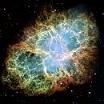
On July 4, 1054 Chinese astronomers note a "guest star" in the constellation Taurus, the star Zeta Thauri in the Crab Nebula (later known as a source of gamma rays); it is visible in daylight for 23 days and at night for two years; American aborigines see it, along with Arab astronomers, but no European records it, they're too busy with the Roman-Greek Catholic Church Schism, and King Macbeth's D at the hands of Duncan's son Malcolm - maybe this is a sign that a new country will be born on July 4 halfway to China in America, which will never be ruled by the ever-split Church?

In 1066 Indian mathematician-astronomer Sripati (b. 1019) dies, leaving Dhikotidakarana (1039), a book on solar and lunar eclipses, and Dhruvamanasa (1056) on calculation of planetary longitudes, eclipses, and planetary transits; he also leaves Siddhantasekhara, about arithmetic, algebra, and calculations on the sphere, and Jyotisaratnamala, Jatakapaddhati (Sripatipaddhatih), and Daivajnavallabha, books on astrology.
In 1091 Walcher of Lorraine (Malvern) (later prior of Malvern Abbey) records observing lunar eclipses in Italy using an astrolabe, becoming the first observational astronomy in Christian Europe.
In 1204 Andalusia, Spain-born Muslim astronomer Nur ad-Din al-Bitruji dies, leaving the astronomical treatise Kitab-al-Hay'ah, criticizing Ptolemy's system of epicycles and eccentricities and substituting a system of geocentric spheres, proposing a physical cause for celestial motion, which spreads through Europe for the rest of the cent.
In the 2nd half of the 13th cent. French Franciscan friar Bernard of Verdun writes Treatise on the Whole of Astronomy (Tractatus Super Totam Astrologiam), defending Ptolemy's theory of epicycles and eccentrics against al-Bitruji's system of homocentric spheres.

Intellectually-cracked 13th cent. Europe gets one Bourbon, one Scotch, and one beer? On May 30, 1252 king (since Aug. 31, 1217) St. Ferdinand III (b. 1199) dies, and on June 1 his erudite son Alfonso X (the Wise) (El Sabio) (1221-84) becomes king of Castile and Leon (until Apr. 4, 1284), taking a clue about cautious multiculturalism from late great Frederick II of Germany and beginning a cultural awakening in intolerant backward Europe known as the Castilian Thirteenth (13th) Cent. Renaissance, creating the Spanish Nat. Library in Madrid, one of Europe's first state libraries, along with the Alfonsine School of Translators in Toledo, manned by Christians, Jews, and Muslims, incl. Hermannus Alemannus (Herman the German), who trans. a large mass of Arabic works mss. on astronomy, astrology, and history, selected by the king into Latin and Spanish, bringing the most important Greek, Indian, Persian, and Syrian works to the scholarly Euro community, and causing Toledo to become a European intellectual hub which fuels the Renaissance; Alfonso X the Wise supervises the ambitious Spanish pub. known as the General Estoria, which incl. the Alfonsine Astronomical Tables and the Alfonsine Bible (Biblia Alfonsina) as a vehicle for polishing and enriching the Spanish language, causing it to be established as a serious language and intellectual vehicle, rocketing it ahead of Italian, German, and English and making them play catch-up, causing Latin to turn a whiter shade of pale?

In 1264 English Franciscan friar (pioneer of scientific empiricism) Roger Bacon (1214-94) writes De Computo Naturali, an astronomical work.
In 1310 Muslim astronomer-mathematician Shams al-Din al-Samarqandi (b. 1250) dies, leaving Synopsis of Astronomy and a star catalog for 1276-7.


In 1471 German astronomer Regiomontanus (Johannes Muller von Konigsberg) (Johannes Müller von Königsberg) (1436-76), pupil of Austrian astronomer Georg von Puerbach (Purbach) (1423-61) sets up the Nuremberg Observatory, becoming the first European observatory. In Jan. 1472 he measures the angular diam. of comets, and helps pub. Puerbach's Theoricae Novae Planetarum, which features diagrams of the system of solid spheres. In 1457 Puerbach pub. Pro Pluribus Annis in Vienna, becoming the first printed almanac. In 1473 Regiomontanus pub. Ephemerides ab Anno, an almanac for 1475-1505, used by Columbus. In 1474 he pioneers lunar nautical navigation. In 1475 he is called to Rome by Pope Sixtus IV to help reform the pokey Julian Calendar, which is now eight days behind, with the vernal equinox falling on Mar. 12 instead of Mar. 20; too bad, he dies of the plague next year before doing it, leaving De Triangulus, which becomes the std. textbook on trigonometry.
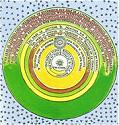

In 1571 English mathematician Leonard Digges (1520-59) (father of astronomer Thomas Digges) invents the Theodolite for surveying. The same year Thomas Digges (1546-95) pub. Pantometria, a manual of surveying, pitching his father Leonard Digges as the inventor of the reflecting and refracting telescopes between 1540-59; too bad, he brags too much and claims that he could "read letters, numbered pieces of money with the very coin and superscription thereof, cast by some of his friends of purpose upon downs in open fields, but also seven miles off declared what hath been done at that instant in private places." In 1572 Danish metal-nosed astronomer Tycho Brahe (1546-1601) (known for keeping a tamed elk and a dwarf named Jepp as a jester) discovers a supernova ("New Star") in the constellation Cassiopeia, startling the establishment, who believe that the heavens are unchanging; the discovery wows Danish king Frederick II, who pays for two new observatories for him; he also produces the first star catalog, correcting grave errors in the Alfonsine and Prutenic Tables; meanwhile English astronomer Thomas Digges (1546-95) uses the parallax of the supernova to conclude that it has to lie beyond the orbit of the Moon, shocking the establishment, which believes that no change can take place among the fixed stars. In 1576 Thomas Digges (ed.) pub. A Prognostication Everlasting, his father's perpetual almanac, with a new appendix containing the first detailed discussion of the Copernican heliocentric theory in the English language; "This orb of stars fixed infinitely up extends itself in altitude spherically, and therefore immovable the palace of felicity garnished with perpetual shining glorious lights innumerable, far excelling over [the] Sun both in quantity and quality the very court of celestial angels, devoid of grief and replenished with perfect endless joy, the habitacle for the elect." In 1579 Thomas Digges pub. Arithmetical Military Treatise, containing the first printed use of the term "pynt blancke" (Fr. "pointe a blanc" = pointed at white) is first used to mean the white bulls-eye of practice targets used by archers.
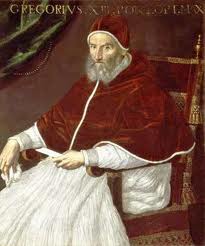
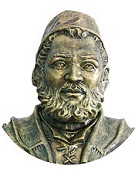

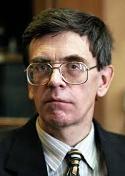

Speaking of clocks, er, calendars. On Feb. 24, 1582 upon the recommendation of German Jesuit astronomer Christopher Clavius (1538-1612), Pope (since May 13, 1572) Gregory XIII (1502-85) issues the bull Inter Gravissimas, decreeing a changeover from the Julian Calendar to the Gregorian Calendar; 10 days (lost since Jan. 1, -46, when the Julian Calendar began) are to be dropped, so that Oct. 15 (Fri.) immediately follows Oct. 4, or Dec. 20 (Mon.) follows Dec. 9; the Papal States, Spain, Portugal, and Poland change in Oct., France, Holland, Belgium, and Scandinavia in Dec.; the Roman Catholic states of Germany and Switzerland adopt it in 1584, followed by Hungary in 1587; too bad, Protestant countries suspect a rat and refuse to change, and the Continental Protestant states hold out until 1700, and England and its colonies till 1752; Russia holds out until 1918, Greece until 1924, and non-Euro states don't adopt it until the 19th and 20th cents., Japan in 1873, Egypt in 1875, Turkey in 1926, and China in 1949; the figure for the length of the year from Copernicus' De Revolutionibus Orbium Coelestium is proposed but not used as the basis of the reform calendar; after a suggestion by Vatican librarian Topo Gigio, er, Aloysius Lilius (Luigi Lilio or Giglio) (1510-76), only century years (1600, 1700, etc.) with the century part itself evenly divisible by four (1600 but not 1700) are leap years, which causes three leap years to be taken out of each 400, trimming the avg. calendar year down quite fortunately to only about 26 sec. longer than the Earth's real orbital period, which will take 3,323 years to become 1 day out of synch; too bad, there should have been a 13-day discrepancy, not a 10-day one, causing the Phantom Time Hypothesis to be developed by Herbert Illig (1947-), Anatoly Fomenko (1945-), Uwe Topper (1940-) et al., that phony phantom centuries were manufactured during the Renaissance to create a nonexistent Dark Ages; Pope Gregory's new calendar for the Christian world changes the date of the new year from Apr. 1 to Jan. 1, and those who still celebrate New Year's Day on Apr. 1 begin to be known as April Fools.

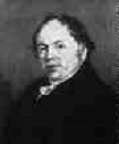
In 1603 German Jesuit astronomer Christoph Scheiner (1575-1650) invents the Pantograph (Gr. "pant" + "graph" = all/every + write) for reproducing enlarged or reduced maps and drawings; he doesn't pub. the invention until 1631 - without fishing your socks from the bottom of the sheets? In 1821 Scottish mathematician-astronomer William Wallace (1768-1843) improves the pantograph, inventing the Eidograph.



Two ways to shoot the Moon? In 1608 Dutch eyeglass maker Hans (Johann) Lippershey (1570-1619) applies for a patent for the telescope (Gr. "far-seeing"), which is first used to look at the sky by Galileo, who constructs his own next July 1 mo. after hearing about it.
In 1609 the salary of Pisa-born Italian scientist Galileo Galilei (1564-1642) is doubled by the senate of Venice for his invention of the Astronomical Telescope after he views the Moon at 6X magnification in Aug. (later increased to 20X), noting that it has mountains, and discovers Jupiter's moons (not all 63 of them); a believer in astrology, he prepares the horoscope of the Grand Duke of Tuscany and predicts that he will have a long life, only to see him die a few weeks later - a little bit of bacon, a little bit of beans?
On Jan. 7, 1610 Galileo sights four of Jupiter's moons (Ganymede, Io, Europa, Callisto), calling them the Medician Stars after the Medicis; by the end of the year he observes the Phases of Venus, becoming the first direct evidence for the Copernican Theory, which he waits until 1613 to pub. In 1610 Galileo pub. Siderial (Starry) Messenger (Sidereus Nuncius), becoming the first pub. look at the sky through a telescope, bolstering the Copernican theory with its description of the mountains on the Moon and the four satellites of Jupiter ("sideria Medicea"), a mini-model of Copernicus' Solar System; he also discovers sunspots, and uses them to estimate the rate of the Sun's rotation, which really freaks out the Aristotelians, who believe in the immutability of the "perfect" heavenly bodies; next year Johannes Kepler coins the word "satellite", from the Latin word for assistant.

In 1611 German astronomer Johannes Kepler (1571-1630) pub. Dioptrice, containing the first explanation of the optics of myopia, and the first theory of the rainbow; also describes the double convex microscope; he also pub. Phyllotaxis, which mentions the Fibonacci Sequence. In 1604 he pub. Supplement to Witelo, Expounding the Optical Part of Astronomy, incl. Ad Vitellionem Paralipomena, the first explanation of the optics of the human eye. In 1618 he pub. Epitome Astronomia Copernicanae (The Epitome of Copernican Astronomy), a textbook on astronomy which describes it in modern terms, replacing scholastic mumbo-jumbo with observation, translation into numbers, and use of mathematical models to form hypotheses which "save the appearances" and describe the true motions of the planets and their causes, which had been hidden in "God's pandects"; those who can penetrate his shrouded Latin prose get a shock; Kepler's salary, which is paid only irregularly before the Thirty Years' War, is hardly paid at all; his mommy is charged with witchcraft during one of the many German witch hunts, and narrowly escapes execution; meanwhile, the Catholics keep persecuting him for not worshipping images and saints, and even his fellow Lutherans in Linz exclude him from their Evening Meal because he doesn't believe in God's omnipresence; "Suffering along with many brothers for the sake of religion and for the glory of Christ by enduring harm and disgrace, by leaving one's house, fields, friends, and home, I would never have believed all of this could be so agreeable." (Kepler)

In 1612 German astronomer Simon Marius (1573-1625) rediscovers the Andromeda Nebula, which was first noted by the Muslims in 963.
In 1617 Galileo's collaborator Benedetto Castelli uses a telescope to determine that Mizar, one of the two stars in the Big Dipper is a binary; in 1890 Mizar A is discovered to be a binary, followed in 1908 by Mizar B, followed in 2009 by Alcor, making it a sextuplet group.
In 1638 English astronomer-mathematician William Gascoigne (1612-44) invents the Micrometer.
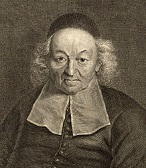
In 1645 Loudon, Vienne-born French astronomer-mathematician (Calvinist-turned-Roman Catholic) Ismail Bouillaud (Bouillau) (Bullialdus) (1605-94) pub. Astronomia Philolaica; popularizes Kepler's elliptical orbits and assumes the inverse-square law for the first time; most important book on astronomy between Kepler and Newton? In 1661 he observes the Andromeda "nebula".

In 1647 French astronomer Adrien Auzout (1622-91) proves that air has barometric pressure. In 1648 Blaise Pascal proposes the concept of air pressure in barometers, having his brother-in-law carry one up a mountain and record its readings to show that higher altitudes have lower air pressure.

In 1663 Scottish mathematician James Gregory (1638-75) pub. his invention of the compact reflecting Gregorian Telescope, which becomes the std. telescope design for the next 150 years; he also describes a method to measure the Astronomical Unit (Earth-Sun distance) by using the transit of Venus. In 1667 he pub. Vera Circuli et Hyperbolae Quadratura, which shows that the areas of the circle and hyperbola can be obtained from an infinite convergent series, and speculates on the impossibility of the quadrature of the circle and the existence of transcendental numbers; he also pub. infinite series expansions of trig functions; reprinted in 1668 with the appendix Geometriae Pars, with methods on calculating the volumes of solids of revolution.

In 1655 Dutch scientist Christiaan Huygens (1629-95) discovers the rings of Saturn, also on Mar. 25 Saturn's biggest moon Titan (2nd largest moon in the Solar System, and only moon with an atmosphere); at last the age-old belief that the heavens are of a different stuff than the Earth is shattered when the former "god" Saturn turns out to have a physical structure, and therefore is not heavenly, pushing the abode of God and the angels back, back, back; he also discovers the mv^2/r formula for planetary orbits, which really makes their physical ordinariness apparent, since the m in the formula applies to heavenly angel hair as well as crap? - what a revelation just as the big 666 year is coming up? In 1656 he builds the first Pendulum Clock in London based on a design by Galileo; after adding the first-ever anchor escapement to reduce the pendulum swing, it only loses 1 sec. every 3 hours, vastly improving on the old verge-and-folio escapement. In 1660 he and the Abbe d'Hautefeuille independently invent the spiral hairspring for clocks and watches, improving accuracy. In 1661 he invents the manometer for measuring the elastic force of gases. In 1665 he first observes automatic synchronization of two clocks suspended on the same beam, along with indirect coupling, which makes two pendulum clocks mounted together swing in opposite directions.


The year 1666 contains all the Roman numerals MDCLXVI) once; also 1444, 1446, 1464, 1466, 1644, 1646, 1664. In 1666 the Millennium Fever (MF) over the Big Year 1666 stirs mass paranoia in Christendom, the smart money being that all those evil scientists and secular pagans (and the antichrist pope and his papist followers, according to Protestants) are going to be consumed in fire just as the unbelievers were consumed in water in the days of Noah; later, when the disappointment sets in, hope springs eternal in the human breast, so anybody born in this year is suspected of being the Devil or the Antichrist, and Armageddon is at least going to happen in his lifetime, so don't give up the faith?; meanwhile never fear, the Scientists are here, as the Annus Mirabilis of English Cambridge U. man Sir Isaac Newton (1642-1727) begins when the plague causes him to be sent home from Cambridge to his home in Woolsthrope, where the world's most famous apple falls from the tree, revolutionizing Science with the stunning realization that the heavens and the Earth are subject to the same universal laws - one little orb falls from the sky, causing their minds to fall from the divine Heavens into the material world of Earth, and like it? I walk this empty street on the boulevard of broken dreams? Don't let a migraine upset you? As a total rebuff to the Millennium Feverists who say the world is not worth studying (since this is its last year), Isaac Newton goes into a glorious brilliant Rain Man funk in Woolsthorpe and discovers the Integral Calculus (not dental rot but the branch of mathematics) and the Newton's Law of Universal Gravitation (inverse square law), measures the Moon's orbit, and, when not otherwise occupied, buys a glass prism "to try therewith the phenomena of the colours", becoming the first to deduce that the prism splits white light into a spectrum as a result of the different refractive index for each color; sitting under a you know what kind of tree, he observes a you know what falling, and calculates that at a distance of 1 ft. the attraction between two objects is 100 times stronger than at 10 ft., making the super mental leap that the force exerted by the Earth on the apple is the same as that exerted by the Earth on the Moon; "And the same year [1666] I began to think of gravity extending to the orb of the Moon, and having found out how to estimate the force with which a globe revolving within a sphere presses the surface of the sphere, from Kepler's Rule... I deduced that the forces which keep the Planets in their Orbs must [be] reciprocally as the squares of their distances from the centers about which they revolve: and thereby compared the force requisite to keep the Moon in her Orb with the force of gravity at the surface of the earth, and found them answer pretty nearly. All this was in the two plague years of 1665 and 1666, for in those days I was in the prime of my age for invention, and minded Mathematicks and Philosophy more than at any time since" - Isaac Newton, memo in the Portsmouth Collection, 1714; the Newton pippin is later named to commemorate the Big Apple of 1666 - the first modern scientist walks the Earth, and he's white, Anglo-Saxon, and Protestant, but actually not so modern, as he's still got one foot in the past and believes in alchemy and bizarre Bible theories, taking a few years out of his all-important studies to figure out math and physics, in the belief that the Universe is a giant code and he can crack it; his success paradoxically strengthens belief in astrology? Newton's funeral was presided over by "A. (Alexander) Pope".



On Aug. 10, 1675 the Royal Greenwich Observatory in Greenwich, London overlooking the River Thames, designed by Sir Christopher Wren is begun by order of Charles II in order to make a new improved catalog of stars for ship navigation; Charles II selects clockmaker ("Father of English Clockmaking") Thomas Tompion (1639-1713) to build two identical clocks with long pendulums and small arc swing as suggested by Robert Hooke, driven by a deadbeat escapement invented by Richard Towneley (1629-1707), that only need to be wound once a year, proving so accurate that they become instrumental in correcting astronomical calculations; John Flamsteed (1646-1719) is appointed the first astronomer royal of England, but he is so slow at calculation that at in 1704 the catalog is still incomplete but is pub. against his wishes, and he publicly burns 300 of the 400 copies in protest; meanwhile Sir Isaac Newton uses his catalog to verify his theory of gravitation. 19-y.-o. Edmund Halley (b. 1656) devises a new method for determining planetary orbits; Tompion and Hooke go on to make some of the first watches with balance springs.

In 1682 English astronomer Edmund Halley (1656-1742) discovers the 75.5-year period of Halley's Comet from observed data and his own calculated parabolic orbits, deducing that the comets of 1531, 1607, and 1682 are one and the same, and move in an elliptical orbit because they all have a Nodus Ascendus of about 20 deg. in Taurus.

On Nov. 18, 1727 the city of Jaipur in Rajasthan, India (modern-day pop. 3.1M) 167 mi. from modern-day New Delhi is founded as a trading city and new capital by Rajput maharaja (1699-1743) and astronomer Sawai Jai Singh II (1688-1743) of Amber, becoming known for its Havelis, courtyard mansions; in 1876 the city is pained pink to welcome English Prince Albert Edward of Wales (future Edward VII) , causing the city to be nicknamed "the Pink City"; the Jantar Mantar (magical device), a network of three observatories based in and S of Delhi is built there by the maharaja, who designs masonry structures and crude instruments because his Jesuit advisers were prohibited by the Church from accepting the views of Galileo and Copernicus; the city is designed according to Hindu doctrine in seven rectangular areas according to the caste system, with the palace in the 7th and holiest one, and the observatory in the place of the temple; other observatories are built in Delhi, Mathura, Ijjain, and Varanasi.
In 1731 English astronomer John Bevis (1695-1771) rediscovers the Crab Nebula (M1), which was seen by Chinese astronomers in 1054.

In 1743 French mathematician-astronomer Alexis Claude Clairaut (1713-65) pub. a confirmation of Isaac Newton's prediction that the Earth is slightly oblate (flattened at the poles).


On Dec. 9, 1743 the Klinkenberg-De Cheseaux Comet (Great Comet of 1744) is discovered by Dirk Klinkenberg (1709-99) of Haarlem, Netherlands, and again on Dec. 13 by Jean-Philippe Loys de Cheseaux (Chéseaux) (1718-51) of Lausanne, Switzerland; next Mar. it exhibits 6-7 tails and becomes brighter than Jupiter, becoming the largest recorded comet since the birth of modern astronomy (0.5 absolute magnitude), although the ancients saw a bigger 10-tailed comet in -1486. In 1744 Cheseaux first states Olbers' Paradox, that the night sky can't be dark if the Universe is infinite.

In 1750 French astronomer Abbe Nicolas Louis de Lacaille (La Caille) (1713-62) leads an expedition to the Cape of Good Hope to determine solar and lunar parallax.

In 1750 German astronomer Johann Tobias Mayer (1723-62) pub. a study of the libration (slight oscillation about the axis) of the Moon, followed in 1752 by lunar tables, and in 1775 by a chart of the full Moon, becoming the std. for 50 years.

In 1750 English astronomer Thomas Wright (1711-86) first describes and expounds the Milky Way; he is actually wrong, thinking it has a spherical shape, but Immanuel Kant guesses the right shape (disc) from a wrong review of his work?

In 1758 French astronomer Charles Messier (1730-1817) rediscovers the Crab Nebula in the constellation Taurus, first seen by Chinese astronomers in 1054, and decides that it isn't a comet since it doesn't move, causing him to begin compiling his Messier Star Catalog, with this as M1 (actually a catalog of celestial objects that shouldn't be mistaken for comets).

On Dec. 25, 1758 Halley's Comet is located on the predicted return date by German astronomer Johann Georg Palitzsch (1723-88), making English astronomer royal Edmund Halley (d. 1742) a superstar; its closest approach is next Mar., as predicted by Alexis Clairaut - proof that 1759 is Britain's year?

In Jan. 1779 French astronomer Antoine Darquier de Pellepoix (1718-802) discovers the Ring Nebula (Messier 57) in the N constellation of Lyra.

On Mar. 13, 1781 German-born English amateur astronomer Frederick William (Friedrich Wilhelm) Herschel (1738-1822) discovers a new comet, sending An Account of a Comet to the Royal Society; when it turns out to be a new planet, Uranus, he names it Georgium Sidus in honor of George III, and gets knighted in return; in 1850 "the Georgian" is renamed Uranus - Your Anus would suggest itself later quite naturally when thinking about him? On Jan. 11, 1787 Herschel discovers Uranus' moons Titania and Oberon, naming them after Shakespeare's "A Midsummer Night's Dream". In 1789 he builds the world's largest telescope for the next 50 years, with a 48-in. aperture; on Aug. 28 he discovers Saturn's 6th moon Enceladus (the 100-armed giant?), and on Sept. 17 its 7th moon Mimas (named after a son of Gaia), marked by the giant Herschel Crater.

In 1783 Dutch-born deaf English amateur astronomer John Goodricke (1764-86) suggests that the variable star Algol (Beta Persei) (the Demon Star) is an eclipsing binary. On Sept. 10, 1784 English astronomer Edward Pigott (1753-1825) detects the variability of Eta Aquilae, becoming the first known Cepheid Variable; in Dec. his neighbor and friend John Goodricke discovers the variability of star Delta Cephei in the Cepheus ("king") constellation; too bad, he contracts pneumonia from the effort, and soon dies.
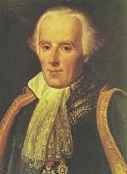
About 1783 English natural philosopher (known for his black complexion) Rev. John Michell (1724-93) proposes the Cavendish Experiment to measure the gravitational constant, and first pub. the Schwarzschild Radius for a star, where gravity causes it become a "dark star" from which light cannot escape, later called a black hole; the experiment is performed in 1797-8 by British scientist Henry Cavendish.
In 1789 William Herschel builds the world's largest telescope for the next 50 years, with a 48-in. aperture; on Aug. 28 he discovers Saturn's 6th moon Enceladus (the 100-armed giant?), and on Sept. 17 its 7th moon Mimas (name after a son of Gaia), marked the giant Herschel Crater.

In 1797 German astronomer Heinrich Wilhelm Matthaus Olbers (1758-1840) pub. his method for calculating comet orbits.


On Jan. 1, 1801 Italian Theatine monk-astronomer Giuseppe Piazzi (1746-1826) discovers the first asteroid, Ceres, and German rising star mathematician Carl (Karl) Friedrich Gauss (1777-1855) computes its orbit using his new Gauss Least-Squares Method, which allows it to be found even after it goes invisible and emerges among a multitude of stars, causing him to be appointed dir. of the Gottingen Observatory for life in 1807, going on to become the greatest mathematician since antiquity - while juggling sausages? In 1801 Gauss pub. Disquisitiones Arithmeticae, which founds the mathematical field of Number Theory, incl. the theory of congruences, quadratic forms, and quadratic residues.

In 1800 German-born English astronomer Sir Frederick William Herschel (1738-1822) discovers Infrared Light (beyond the red end of the spectrum) using prisms and thermometers on solar rays; he also discovers a connection between 11-year sunspot cycles and wheat prices, becoming the first theory of economic cycles.

In 1801 German astronomer Johann Elert Bode (1747-1826) pub. Uranographia, a catalog of 17,240 stars, beating the previous charts by 12K stars, with elaborate artistic representations of the constellations, which go out of fashion with astronomers after this.



In 1838 astronomers Friedrich Wilhelm Bessel (1784-1846) of Germany, Friedrich Georg Wilhelm von Struve (1793-1864) of Germany, and Thomas Henderson (1798-1844) of Scotland measure stellar parallax for the first time this year and next in binary star system 61 Cygni with measurements 6 mo. apart, giving the heliocentric theory its final proof.

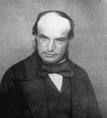


On Sept. 23, 1846 planet Neptune is discovered by German astronomer Johann Gottfried Galle (1812-1910) and Heinrich Ludwig d'Arrest (1822-75) after its position is independently predicted mathematically in 1843-5 by English mathematician-astronomer John Couch Adams (1819-82) (pr. cooch) of Cambridge U. in England (not to be confused with U.S. pres. John Adams) and independently in 1846 by Urbain Le Verrier (1811-77) of France; Adams' prediction is less than 2 deg. from the actual location, making him BMOC in 19th cent. astronomy; in July 2011 it makes its first orbit around the Sun since discovery; on Oct. 10 (17 days after the discovery of Neptune), English astronomer William Lassell (1799-1880) discovers Triton, Neptune's largest moon (retrograde). In 1851 Lassell discovers Uranus' moons Ariel and Umbriel, starting the tradition of naming Solar System moons after Shakespeare's characters, causing Queen Victoria to ask to meet him when she visits Liverpool, after which he builds a 48-in. telescope in Malta to discover glorious new make-benefit moons for the Queen; no astral body is named after Shakespeare himself until ?
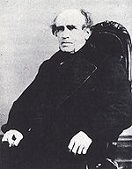
On Sept. 1, 1854 Scottish-born Am. astronomer James Ferguson (1797-1867) discovers 31 Euphrosyne, 12th largest and 5th most massive asteroid in the asteroid belt, named after Greek goddess Euphrosyne (Euthymia) (one of the Three Graces or Charites), becoming the first asteroid discovered from North Am.
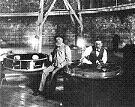
On Jan. 31, 1862 Am. astronomer Alvan Graham Clark (1832-97) of Cambridgeport, Mass. discovers blue-skewed Sirius B, the first white (degenerate) dwarf star, a companion of Sirius (Alpha Canis Majorus).

On July 16, 1862 Comet Swift-Tuttle (109P/Swift-Tuttle) (period 133.28 years) is first observed by Am. astronomers Lewis A. Swift (1820-1913) and Horace Parnell Tuttle (1837-1923); it is rediscovered in 1992 by Japanese astronomer Tsuruhiko Kiuchi.



In 1868 after an eclipse, French astronomer Pierre Jules Cesar (César) Janssen (1824-1907), along with English chemist Sir Edward Frankland (1825-99) and English astronomer Sir Joseph Norman Lockyer (1836-1920) of England discover a new element in the Sun's chromosphere which they call Helium (He) (#2); it takes until 1895 for Sir William Ramsay to prove that it exists on Earth.


In 1872 Am. astronomer Asaph Hall (1829-2907) pub. an article on the experimental determination of pi by throwing a fine steel wire randomly onto a plane surface ruled with equidistant parallel lines, with pi being equal to 2 * (l/d) * (n/i), where l = length of wire, d = distance between lines, n = # of trials, and i = # of intersections. On Aug. 12, 1877 while not throwing steel wires onto a wooden plane, Am. astronomer Asaph Hall (1829-2907) discovers Mars' moons Deimos (Mars II) (smaller and farther, rises in the E and sets in the W), followed on Aug. 17 Phobos (Mars I) (larger and closer, rises in the W and sets in the E) (closest moon to its primary in the Solar System), with English chemist Henry George Madan (1838-1901) suggesting the names after Book 15, Line 119 of Homer's Iliad, where Ares (Mars) summons Dread (Deimos) and Fear (Phobos); Madan's grand-niece Venetia Phair (nee Burney) later names Pluto in 1930; meanwhile Italian astronomer Giovanni Virginio Schiaparelli (1835-1910) first observes the canals (canali) of Mars, sparking the public's imagination. In 1889 Schiaparelli discovers the synchronous rotations of planets Mercury and Venus.

In 1872 German astrophysicist Johann Karl Friedrich Zollner (1834-82) pub. a paper criticizing the Panspermia (Lithopanspermia) Theory of William Thompson, Lord Kelvin on the grounds that it begs the question of where life came from in the first place, plus apostrophe, apostrophe, meteors don't seem to be a good way for life to come in through the atmosphere considering the little problem of high temp thermal entry? In 1874 he pub. a paper showing that Mercury's low albedo means that it has no atmosphere, hence no life.



In 1887 Lick Observatory on Mount Hamilton E of San Jose, Calif. is founded from a bequest left by James Lick (1796-1876) (wealthiest man in Calif.), whose body is buried under the site; the 36-in. lens is ground by Am. astronomer Alvan Clark (1804-87), who goes on to grind the 40-in. lens for Yerkes Observatory.
In 1891 Pope Leo XIII founds the Vatican Observatory in Castel Gandolfo, Italy.

In 1895 Boston, Mass.-born astronomer Percival Lawrence Lowell (1855-1916) pub. Mars, which claims that there are "non-natural features" on Mars incl. canals and oases of that are signs of past intelligent life, turning on the public while pissing-off prof. astronomers; followed by "Mars and Its Canals" (1906), "Mars as the Abode of Life" (1908); in 1909 the 60-in. Mount Wilson Observatory telescope in South Calif. becomes operational, showing the canals to have irregular features showing they are geological in origin.


In 1897 Yerkes Observatory in Williams Bay, Wisc., designed by Chicago, Ill.-born astronomer George Ellery Hale (1868-1938), and financed by streetcar magnate Charles Tyson Yerkes (1837-1905) begins operation, with the largest refracting telescope on Earth, a whopping 40 in.

In 1908 Am. astronomer Henrietta Swan Leavitt (1868-1921) discovers the correlation between period of variability and absolute luminosity of star Delta Cepheid, and goes on to confirm the value of all Cepheid variables by 1912, allowing galactic distances to be calculated, after which in 1915 Harlow Shapley uses Cepheid Variables to form a rough size-shape for the Milky Way and the Sun's position within it - allowing male astronomers to rush in to steal her Nobel Prize from Leavitt to Beaver?



In 1915 Am. astronomer Harlow Shapley (1885-1972) determines that the Sun is not in the center of the Milky Way Galaxy but out towards the edge; astronomers still believe that ours is the only galaxy; German astronomer Carl Wirtz proposes that the nebulae are systematically moving away from the solar system. On Apr. 26, 1920 the Shapley-Curtis (Great) Debate rocks the learned halls with an argument over the size of the Universe, with Heber Doust Curtis (1872-1942) curtly claiming that the Sun is at the center of the Milky Way, and Shapley shapily claiming that it's in a nondescript location; too bad, Harlow goes too far and claims that globular clusters and spiral nebulae are also inside the Milky Way; in the 1920s German astronomer Maximilian Franz Joseph Cornelius "Max" Wolf (1863-1932) studies the Milky Way, proving the existence of clouds of dark matter, and showing that spiral and gaseous nebulae have different absoption spectra - like Romulus and Remus suckling on wolf milk?

In 1916 Am. astronomer Edward Emerson Barnard (1857-1923) discovers the 9.5 magnitude Barnard's Star, with a proper motion of more than 10 arc sec. per year, becoming the fastest known (until ?).
On Nov. 2, 1917 the 100-in. 100-ton Hooker Reflecting Telescope at Mount Wilson Observatory in Los Angeles County, Calif. near Pasadena sees first light, becoming the world's largest telescope until 1949, going on to be used by Edwin Hubble to prove that the Universe goes beyond the Milky Way Galaxy in 1923, and that it is expanding in 1929.

In 1919 Am. astronomer William Henry Pickering (1858-1938) predicts the existence and position of "Planet X" based on anomalies in the positions of Uranus and Neptune; when Clyde Tombaugh discovers Pluto in 1930, he flatters himself that the name is an abbreviation for "Pickering-Lowell"; the anomalies later turn out to be accounted for by the masses of Uranus and Neptune and don't actually reflect the influence of tiny Pluto.

On Oct. 21, 1923 the first Planetarium opens in Munich, Germany at the Deutsches Museum, built by Carl Zeiss Co. based on a 1910 proposal by German astronomer Maximilian Franz Joseph Cornelius "Max" Wolf (1863-1932).
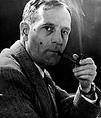
In 1924 English astrophysicist Sir Arthur Stanley Eddington discovers a Mass-Luminosity Relation for stars; meanwhile Am. astronomer Edwin Powell Hubble (1889-1953) uses Cepheid Variables to determine the absolute brightness of a star as a guide to finding its distance, causing him to announce that stars in the Andromeda Galaxy are not inside the Milky Way Galaxy, and that the latter is just one of many in a vast cosmic sea, throwing Earth centrists into a tizzy; in 2010 it is discovered that they shrink in mass, affecting calculations.



In 1927 Belgian Roman Catholic priest-physicist Georges Lemaitre (1894-1966) proposes the Big Bang (Expanding Universe) Theory of the creation of the Universe, both as a way to explain the red shift in spectra from distant galaxies and as a way to prove the existence of God - do you think your kids are scared of you? In 1929 Am. astronomers Edwin Powell Hubble (1889-1953) and Milton Lasell Humason (1891-1972) observe large red shifts in the spectra of extragalactic nebulae, and conclude that all galaxies are moving away from each other and that the Universe is expanding, later called Hubble's Law, and present it as hard evidence in support of the Big Bang creation theory, causing Albert Einstein to give up the Cosmological Constant that he introduced in 1917 to his Gen. Relativity Theory (which opposed gravity and kept the Universe stable), declaring it to be the biggest blunder of his career; meanwhile, since the Roman Catholic Church had proposed the Big Bang as evidence of the existence of God, the scientific establishment covers up Catholic priest Georges Lemaitre's work and gives the credit to Hubble, and God becomes a political football? - they put him in a mask lined with spikes and burned him at the stake?

In Apr. 1928 Am. astronomer George Ellery Hale (1868-1938) pub. the article "The Possibilities of Large Telescopes" in Harper's Mag., obtaining funding from the Rockefeller Foundatin to found the (Mount) Palomar Observatory in the Palomar Mountain Range 90 mi. SE of Los Angeles, Calif. in San Diego County, Calif., which ends up operated by Caltech; it goes on to operate the 18-in. Schmidt Telescope (1936), the 48-in. Samuel Oschin Telescope (1948), the 200-in. Hale Telescope (1949), and the 60-in. Oscar Mayer Reflecting Telescope (1970).

In 1930 Indian astrophysicist Subrahmanyan Chandrasekhar (AKA Chandra) (1910-95) (paternal nephew of C.V. Raman) calculates the Chandrasekhar Limit of 1.44 solar masses for the max. mass of a white dwarf star that can collapse into a neutron star or black hole after a supernova.
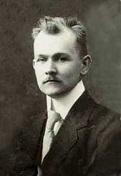
In 1930 Estonian-born German optician Bernhard Woldemar Schmidt (1879-1935) builds the first coma-free 14-in. wide field-of-view Schmidt Mirror Telescope for the Hamburg Observatory.

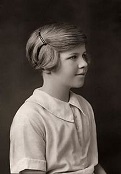

On Feb. 18, 1931 the existence of the 9th solar system planet Pluto is confirmed by Streator, Ill.-born astronomer Clyde William Tombaugh (1906-97) at the Lowell Observatory in Flagstaff, Ariz., using a telescope made out of parts from a cream separator and an old Buick, becoming the first U.S. citizen to discover a planet; it is named by 11-y.-o. Venetia Katharine Douglas Burney (1918-2009) of England, granddaughter of Falconer Madan, brother of English chemist Henry George Madan, who named Deimos and Phobos, and gleefully accepted by Tombaugh because it starts with the initials of astronomer Percival Lowell, who predicted its existence; Mickey Mouse's dog (bloodhound) Pluto debuts in the Disney cartoon The Chain Gang (voice of Jim MacDonald) (he is called Rover in his first two cartoons, and Tombaugh's 11-y.-o. son suggests the name); at 70% rock and 30% ice, and seven solar system moons bigger, is it a planet or a comet of the Kuyper Belt?; the discovery of a planet named after the god of death and the underworld at the time of the rise of the dictators Hitler, Stalin, Mussolini, and Hirohito is no accident? In 2003 2.5km-diam. Eris, a Solar System dwarf planet 27% more massive than Pluto is discovered by Michael E. "Mike" Brown (1965-) of Palomar Observatory, causing Pluto's status as a planet to be reconsidered, and leading to its demotion to dwarf planet.

In 1931 Okla.-born physicist-engineer Karl Guthe Jansky (1905-50) builds a radio telescope on a farm in N.J. out of aerials and old car wheels, calling it his merry-go-round, using it at first to investigate static in long-distance radio; in Aug. he discovers radio astronomy as the hisses reach a peak four min. earlier each day, matching the period of the Earth's rotation with respect to the stars, causing him to conclude that he is receiving cosmic radio waves.
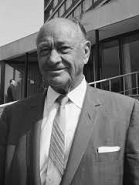
On Apr. 24, 1932 the Apollo Asteroid (1862 Apollo) is discovered by German Heidelberg U. astronomer Karl Wilhelm Reinmuth (1892-1979); on Dec. 5, 1972 the Sisyphus Asteroid is discovered by Paul Wild of Zimmerwald Observatory, and they are traced to the same group, called Apollo Asteroids.
In 1932 the Cordoba Catalogue (begun 1892) lists 613,993 stars on the southern firmament.


In 1933 after computing the avg. mass of galaxies inside the Coma galaxy cluster to be 160x what is expected from their luminosity alone, Swiss astrophysicist Fritz Zwicky (1898-1974) proposes Dark Matter, which isn't widely accepted until 1998 - too many racial undertones? In 1934 he and Walter Baade (1893-1960) of Caltech coin the term "supernova", and hypothesize that they are caused by normal stars turning into neutron stars, and are the source of cosmic rays. In 1937 he proposes that galaxies can act as graviational lenses via the Einstein Effect, which is confirmed in 1979 by Twin Quasar Q0957+561. In 1942 German-born Am. astronomer Walter Baade (1893-1960) of Mount Wilson Observatory makes use of wartime blackout conditions to resolve stars at the center of the Andromeda Galaxy for the first time.

In 1938 amateur radio astronomer Grote Reber (1911-2002) of Wheaton, Ill. detects shortwave radiation coming from the Milky Way at 160 MHz, going on to make a radio frequency sky map by 1941.

In 1946 English radio astronomer Sir Martin Ryle (1918-84) of England builds the first Multi-Element Astronomical Radio Interometer and pub. the first interferometric astronomical measurements at radio wavelengths, later fighting claims from others and ending up with the 1974 Nobel Physics Prize.




In 1948 to counter Russian-Am. physicist George Gamow (1904-68), who proposed the Big Bang Theory of the creation of the Universe, Am. astronomers Fred Hoyle (1915-2001), Thomas Gold (1920-2004), and Sir Hermann Bondi (1919-2005) counter with the Steady-State Theory of the Universe, which uses common sense to view the Universe as without beginning or end; too bad, they have to claim that matter is constantly being created at the rate of a few hydrogen atoms per cubic meter per billion years to explain the constant expansion - jeepers creepers, where did you get those peepers? In 1950 Big Bang critic Hoyle coins the term Big Bang in sarcasm in a radio broadcast, but it's so good that it sticks.

In 1949 Am. astronomer Jesse Leonard Greenstein (1909-2002) demonstrates that the magnetic field in the Milky Way Galaxy is aligned with its spiral arms, as seen from polarized starlight scattered off interstellar dust grains aligned in a magnetic field. In 1978 he pub. a theory of how a red giant star evolves into a white dwarf star.

On Aug. 3, 1950 Russian Jewish scholar Immanuel Velikovsky (1895-1979) pub. the NYT bestseller Worlds in Collision, claiming that a comet-like object was ejected from Jupiter in the 15th cent. B.C.E., changing the Earth's orbit and axis and causing catastrophes that are described in the Bible, then settled down as the new planet Venus, after which in the 8th-7th cents. B.C.E., Mars acted up, causing more catastrophes, after which everything settled down and here we are let me tell you all about it?; an imaginative erudite pseudo-scientific Bible-thumping alternative to standard science that pisses-off the scientific establishment (Harlow Shapley, Carl Sagan et al.) so much that they begin a boycott of Macmillan's textbooks, causing them to drop it in 2 mo. despite being a bestseller, after which Doubleday says ka-ching ka-ching thanks.
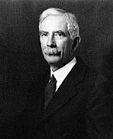
In 1953 Wilton, N.H.-born astrophysicist Charles Greeley Abbot (1872-1973) (former asst. of Charles Pierpont Langley), dir. since 1907 of the Smithsonian Astrophysical Observatory (inventor of the solar cooker, solar boiler, and solar still) discovers a link between sunspot cycles and Earth climate, claiming to be able to predict climate patterns 50 years in advance.


In 1953 Polish-Am. mathematician Jerzy Neyman (1894-1981) and Am. mathematician Elizabeth Leonard Scott (1917-88) of the U.S. discover the existence of superclusters (clusters of clusters) of galaxies; in 1957 Scott discovers the Scott Effect, that very distant clusters can only be detected if they're bigger and brighter than normal - I wish I could find the sexual connotations?

In 1953 Soviet astronomer Josef Shklovsky (1916-85) explains the radio emission from the Crab Nebula as being caused by synchrotron radiation (electrons in magnetic fields moving close to the speed of light).

In the 1960s Kampen, Netherlands-born astronomer Peter (Piet) van de Kamp (1901-95), dir. of Swarthmore College's Sproul Observatory in 1937-72 claims to find a periodic wobble in the motion of Barnard's Star, indicating a planet; too bad, he never admits he is wrong despite numerous criticisms, causing the term van de Kampian planet to be coined; on Nov. 14, 2018 the Red Dots Project announces the discovery of a planet 3.2x the mass of Earth orbiting you know what.
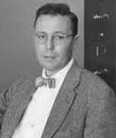
In 1960 Cambridge, Mass.-born physicist John Hamilton Reynolds (1923-2000) of UCB sets the age of the Solar System at 4.95B years based on an excess of xenon-129 in the Richardton Meteorite and other meteorites resulting from beta decay of iodine-129 to xenon-129 in its early years.

The first Jodie Fosters with those accents they try so desperately to shed, pure West Virginia are already into Carl Sagan's Contact? In 1960 Project Ozma (named after L. Frank Baum's Queen of Oz) is founded by Chicago, Ill.-born astronomer Frank Donald Drake (1930-2022) of Cornell U. in Green Bank, W. Va., doing the first research for the SETI program, looking for signs of extraterrestrial life on the 1.420 GHZ band. In 1961 Drake develops the Drake Equation to estimate the number of detectable civilizations in the Milky Way Galaxy, their attempt to answer the Fermi Paradox with the Great Filter, which is later attributed to the greenhouse effect on other planets? The U.S. govt. stops funding SETI in 1995.

In 1963 Dutch-born Am. astronomer Maarten Schmidt (1929-) discovers the first Quasar (Quasi-Stellar Radio Source) (3C 273) using the Mount Palomar Telescope in Calif.; it is 1B l.y. from Earth, has a large red shift indicating that it is receding at a high speed (30K mi. per sec.), and is 200x as bright as the entire Milky Way Galaxy; by the mid-1970s 2K quasars are found - Galileo Galileo Galileo Figaro?

In 1963 Dutch-born Am. astronomer Maarten Schmidt (1929-) discovers the first Quasar (Quasi-Stellar Radio Source) (3C 273) using the Mount Palomar Telescope in Calif.; it is 1B l.y. from Earth, has a large red shift indicating that it is receding at a high speed (30K mi. per sec.), and is 200x as bright as the entire Milky Way Galaxy; by the mid-1970s 2K quasars are found - Galileo Galileo Galileo Figaro?


In 1964 English astronomer Sir Fred Hoyle (1915-2001) and Indian astronomer Jayant Vishnu Narlikar (1938-) of Cambridge U. pub. the Hoyle-Narlikar Theory of Gravitation, combining Einstein's Theory of Relativity with Mach's Principle and postulating that the inertial mass of a particle is a function of the masses of all other particles multiplied by a coupling constant that is a function of cosmic epoch, giving a gravitational constant decreasing strongly with time and therefore a steady-state Universe - having a backup plan, priceless?



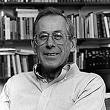
In 1965 German-born Arno Allan Penzias (1933-) and Tex.-born Robert Woodrow Wilson (1936-) of Bell Labs pub. their discovery of the 3 deg. Kelvin Cosmic Microwave Background Radiation (CMBR), supporting the Big Bang Theory, originally proposed in 1927 by Belgian Roman Catholic priest Georges Henri Joseph Edouard Lemaitre (1894-1966), and taking it into primetime after the discovery of blue galaxies is announced on June 12, the blue color taken to mean that they're billions of light years away and therefore in the bloom of youth, winning them the 1978 Nobel Physics Prize; Am. physicist Robert Henry Dicke (1916-97) and Canadian-Am. physicist Phillip James Edwin "Jim" James Peebles (1935-) of Princeton U. independently derive the CMBR, and are in the process of building a radiometer to verify it when Penzias-Wilson scoop them just mi. away, and end up giving them more verification; better microwave detectors later lead know-it-all physicists to attempt to reconstruct the entire scenario in computers - it's complicated, it's complicated? In 1969 E.K. Conklin measures the absolute motion of the Sun through the CMBR as 308 km per sec.
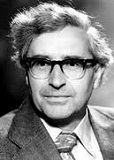
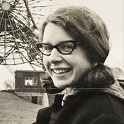
On Nov. 28, 1967 the first Pulsar (pulsating radio star), CP 1919 in Velpecula is discovered with a radio telescope by Jewish British radio astronomer Anthony Hewish (1924-) and his astrophysics student Susan Jocelyn Bell Burnell (1943-) at Cambridge Observatory; thinking it might be a signal from extraterrestrials, it is named LGM-1 (little green men), and the results are not pub. until Feb. 1968; too bad, although she actually discovers it first, and is named second in the scientific paper in Nature, he gets the 1974 Nobel Physics Prize and she gets diddly, causing pissed-off astronomer Fred Hoyle to complain in vain - the snow may fall but I don't mind at all because you keep me winter-warm?

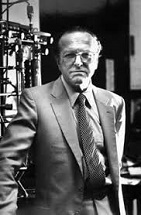
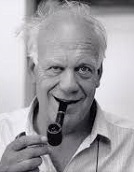
The Pulsar Year in Physics? The science community is now international and shows its grate powah? In 1968 using the new Cooley-Tukey FFT Algorithm, Richard V.E. Lovelace et al. of Cornell U. use the Arecibo Radio Telescope to find a pulsar with a period of 0.033 sec. in the center of the Crab Nebula in Taurus, the site of the famous supernova of July 4, 1054; meanwhile Bernard Yarnton Mills (1920-2011) et al. of the U. of Sydney in Australia identify the 11 Hz Vela Pulsar (PSR 0833-45), and Austrian-born astrophysicist Thomas "Tommy"Gold (1920-2004) of Cornell U. and Italian astrophysicist Franco Pacini (1939-2012) explain pulsars as rapidly rotating neutron stars that produce beams of synchrotron radiation which become rapid on-off signals by the time they intersect the Earth; late in the year David H. Staelin et al. use the Green Bank Radio Telescope in W.V. to discover the Crab Pulsar, becoming the first to identify a visible star associated with a pulsar, which previously were known from radio signals only, thus connecting pulsars with neutron stars and supernovas.




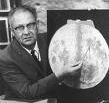

Glory Days, Glory Days, Glory Days pass you by? Just in time to make JFK's prediction come true, white IS right on the Moon on the anniv. of the creation of Washington D.C., the execution of Tsar Nicholas II, the installation of the first parking meters, and the first A-bomb explosion? On July 16, 1969 (Wed.) Apollo 11 blasts off from Cape You Know What, and goes into lunar orbit on July 19, then lands on the "place of magnificent desolation" (the Moon) on July 20 at 4:17 p.m. EDT in the Eagle landing module; as 600M worldwide watch on TV (Soviet TV snubs them), white, blonde-blue, straight Christian church-going Wapakoneta, Ohio-born WASP male Neil Alden Armstrong (1930-2012) (shoe size 9-1/2) (salary $30K a year) becomes the first human to set foot on the Moon at 10:56 p.m. EDT at Tranquility Base (total price tag $35B) after taking a recording of Antonin Dvorak's Symphony No. 9 in E minor, op. 95, B. 178 ("From the New World") with him; his first words are: "One small step for [a] man, one giant leap for mankind"; he rubs white-is-right in more by carrying a piece of fabric from the 1903 White, er, Wright brothers plane Flyer 1; Glen Ridge, N.J.-born U.S. Air Force Col. Edwin Eugene "Buzz" Aldrin Jr. (1930-) follows close behind, later uttering the soundbyte "Neil Armstrong was the first man to walk on the Moon, I am the first man to piss his pants on the Moon"; Presbyterian Aldrin performs a communion before Armstrong starts his walk, but due to a lawsuit by atheist Madalyn Murray O'Hair they black it out; meanwhile Rome, Italy-born U.S. Air Force Lt. Col. Michael "Mike" Collins (1930-) stays in orbit at 60-75 mi. in the Columbia Command Module (named after the cannon-fired Columbiad spacecraft in the 1865 Jules Verne novel "From the Earth to the Moon"), with the Mission Control Center in Houston, Tex. uttering the immortal soundbyte: "Not since Adam as any human known such solitude as Mike Collins during this 47 minutes of each lunar revolution when he's behind the Moon with no one to talk to except his tape recorder"; after the onboard computer fails from interference caused by the radar system as they are making their landing, Armstrong and Aldrin switch to manual control and display their hotdogging cowboy skills, landing with less than 1 min. of fuel left; the first moon walk confirms the prediction made in 1964 by Dutch-born U. of Ariz. astronomer Gerard Peter Kuiper (1905-73) (who helped identify lunar landing sites) that it would be "like crunchy snow"; Aldrin brings a copy of the 1941 poem A Prayer for Protection by Am. poet James Dillet Freeman (1912-2003), causing to be called the "Poet Laureate to the Moon"; after Aldrin plants a nylon flag on El Moono, and they have their romp, they return to Earth and splashdown on July 24 in the Pacific, and are brought aboard the USS Hornet (CV-12), then greeted personally by Pres. Nixon while on a round-the-world tour (July 23-Aug. 3) to try to get back some of the billions wasted, er, invested in a second industrial rev., er, wasted with some good Cold War propaganda; they then spend 65 hours inside the Mobile Quarantine Facility to prove they didn't acquire "Moon germs" under the July 16 U.S. Extra-Terrestrial Exposure Law, violation of which carries a 1-year sentence and $5K fine; Walter Cronkite makes CBS-TV the most-watched TV network for the missions, which follows through to Apollo 13; Thomas Otten Paine (1921-92) is the head of NASA in 1969-7 (first seven Apollo manned missions), and goes on to become pres. of Northrop Corp. in 1976-82; The New York Times finally apologizes for a 1920 article publicly scoffing at Robert Goddard's idea that a rocket can function in a vacuum; David Threlfal of Preston, Lancashire, England is awarded a £10K check by bookmaker William Hill, Ltd. for a £10 bet in 1964 that a man would land on the Moon by 1971 at 1000 to 1 odds; millions believe the whole thing is a staged govt. hoax, pointing to the "rippling flag", absence of blast craters, shadows suggesting stage lighting, etc.; millions more that all that money was "dumped into space", or that it would have been better spent reclaiming the deserts, developing agriculture, affordable housing and medicine, or jump-jiving woo woo woo?; the landing was faked to help the U.S. win the Cold War?; the dir. of the fake landing was Stanley Kubrick, who gets the truth past govt. censors in his 1980 film "The Shining?"; too bad, the astronauts leave radar corner reflectors, which can be seen from Earth, proving they were there?; on July 16, 2009 NASA admits that it lost its original hi-res moonwalk footage, but is hiring Hollyweird to restore it, stoking conspiracy theorists; the Apollo 11 astronauts appear on the first U.S. stamp to depict a living American, issued later in the year; "For one crowning moment we were creatures of the cosmic ocean" (Aldrin); "Slipped the surly bonds of Earth to touch the face of God" (Ronald Reagan); Aldrin later suffers from depression - buzzy Excedrin headache number?
In 1970 the Long Day of Joshua Hoax begins circulating, to the effect that NASA scientists have proved the divine inspiration of the Bible by confirming the missing day in the Bible Book of Joshua 10:12-13 using computers.

In 1970 Jewish-Am. astronomer Vera Cooper Rubin (1928-) reports anomalies in measurements of the Andromeda Galaxy known as the Galaxy Rotation Problem, which leads to a hunt for "missing mass" in the Universe, the most popular solution being the existence of Dark Matter. In 1974 she and W. Kent Ford Jr. (1931-) discover that the Milky Way Galaxy has a proper motion of about 300 mi./sec (500 km/s) with respect to distant galaxies; meanwhile U.S. radio astronomers discover that the microwave sky appears hotter in the direction of motion of the galaxy by 1 part per thousand, becoming known as "dipole anisotropy".
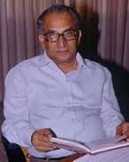
In 1971 Indian astrophysicist Jagadish Chandra "J.C." Bhattacharyya (1930-2012) discovers a thin atmosphere around Jupiter's moon Ganymede; in 1977 he discovers an extended ring system around Uranus.

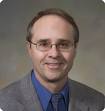

In 1972 Am. astronomers Carl Edward Sagan (1934-96) and George Mullen propose the Faint Early Sun Paradox, that the Earth's climate has been fairly constant for the last 4B years yet the Sun's radiation has increased by 35%-30%; in 1993 Am. scientist Jim Fraser Kasting (1953-) concludes that CO2 was 30% of the Earth's atmosphere, creating a greenhouse effect; in 2010 Danish scientist Minik Rosing et al. propose that the cloud layer was thinner in the past, allowing more rays to reach the Sun, and that the CO2 levels were only 0.1%.

In 1973 Italian astronomer Giovanni Fabrizio Bignami (1944-) discovers gamma rays coming from an invisible source, which in 1976 is named Geminga (It. "it's not there"); it turns out to be a neturon star approx. 552 l.y. (250 parsecs) from the Earth in the constellation Gemini, becoming the first known radio-quiet pulsar.

In 1973 at a celebration of the 500th birthday of Nicolaus Copernicus, who was known for the Copernican Principle that the Earth doesn't occupy a privileged place in the Universe, Australian physicist Brandon Carter (1942-) coins the term "anthropic principle" for the idea that: "Although our situation is not necessarily central, it is inevitably privileged to some extent", and that the Universe we observe allows us to develop as humans, although other non-observable Universes might exist; it later evolves into attempts to claim that the four fundamental interactions in physics must be balanced to provide for the existence of life, etc. - the Bible strikes back?


In 1973 Am. astrophysicist Jeremiah Paul "Jerry" Ostriker (1937-) and Canadan physicist Philip James Edwin "Jim" Peebles (1935-) propose the existence of Dark matter to explain why galaxies don't fly apart - into striking pebbles?
On Nov. 16, 1974 the Arecibo Radio Telescope sends an interstellar radio message aimed at the M13 Great Globular Cluster in Hercules, which is expected to arrive around the year 27,000 C.E.

In 1974 English astrophysicist John R. Gribbin (1946-) and Stephen H. Plagemann pub. The Jupiter Effect: The Planets as Triggers of Devastating Earthquakes, claiming that the alignment of Solar System planets causes a 0.04mm rise in the high tide and triggers earthquakes in 179-year cycles, predicting an earthquake along the San Andreas Fault between 1979 and 1982 that will wipe out Los Angeles, later claiming it to be the 1980 Mt. St. Helens eruption, then fastening on Mar. 1982; Gribbin backs down in July 1980, calling it "too clever by half", but in Feb. 1982 they pub. The Jupiter Effect Reconsidered, claiming it had happened despite a lack of alignment; in 1999 Gribbin repudiates it once for all, with the soundbyte "I don't like it, and I'm sorry I ever had anything to do with it."
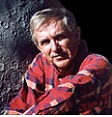
In 1974 Am. astronomers William Kenneth "Bill" Hartmann (1939-) and Donald R. Davis of the Planetary Science Inst., and Alfred G.W. Cameron and William Roger Ward (1944-2018) of Harvard U. pub. the theory that the Moon split off from the Earth after a huge impact with some planet sized body (Thea), giving the Earth its lucky 23 deg. tilt.

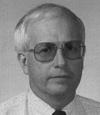
In 1974 British astronomer Sir Fred Hoyle (1915-2001), and Am. astronomers William Alfred "Willie" Fowler (1911-95) and Robert W. Wagoner calculate that the Big Bang Theory correctly predicts the amounts of deuterium and lithium in the observed Universe.


In 1974 Am. astronomers Russell Alan Hulse (1950-) and his thesis advisor Joseph Hooton Taylor Jr. (1941-) of the U. of Mass. Amherst discover the first binary pulsar PSR B1913+16 using the Arecibo Observatory in Puerto Rico, becoming known as the Hulse-Taylor Binary, winning them the 1993 Nobel Physics Prize.
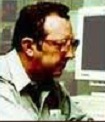
In 1974 Am. astronomer Charles Thomas Kowal (1940-2011) of Mount Palomar Observatory discovers Jupiter's moon Leda, followed next year by Themisto, followed on Nov. 1, 1977 by the tailless asteroid-comet 2060 Chiron (95P/Chiron), becoming the first recognized Centaur (minor planet).

In 1974 French astronomer Antoine Emile Henry Labeyrie (1943-) builds the first Dual-Telescope Optical Interferometer, going on to invent Speckle Interferometry.
In 1975 UCLA chemist Ben M. Zuekerman discovers space alcohol; in 1995 Tom Millar, Geoffrey MacDonald, and Holf Habing discover the gigantic alcohol cloud G34.3 10K l.y. from Earth in the Aquila Constellation, 1K the size of the Solar System, with enough alcohol to make 400TT (400E24) pints of beer.

On Apr. 1, 1976 English amateur astronomer Sir Alfred Patrick Caldwell Moore (1923-) reports the Jovian-Plutonian Gravitational Effect on BBC Radio 2 as an April Fool's hoax, claiming that it is causing a noticeable short-term reduction in Earth's gravity, telling listeners to jump into the air at 9:47 a.m. to feel a floating sensation, and receiving hundreds of telephone calls claiming to confirm it.

In 1976 English theoretical physicist Sir Thomas Walter Bannerman "Tom" Kibble (1932-) of Imperial College, London theorizes that long super-thin Cosmic Strings formed after the Big Bang.

On June 22, 1978 800-mi.-diam. Charon (named after the ancient Greek ferryman of Hades), the only known moon of 1.4K-mi.-diam. Pluto is discovered by Am. astronomers James Walter "Jim" Christy (1938-) and Robert Sutton Harrington (1942-93) at the U.S. Naval Observatory in Flagstaff, Ariz., the same city where Pluto was discovered in 1930.
In 1979 English astronomer Dennis Walsh (1933-2005) of Jodrell Bank Observatory observes the first galaxy that acts like a Gravitational Lens.
In 1979 the Canada-France-Hawaii Telescope (CFHT) on the summit of Mauna Kea in Hawaii's Big Island begins operation.

On Sept. 28, 1980 the 13-part Cosmos series, written and narrated by atheistic it's-all-right-Science-will-explain-everything Brooklyn, N.Y.-born astronomer Carl Edward Sagan (1934-96) debuts on PBS-TV; it is broadcast in 60+ countries to an audience of 400M, becoming the largest PBS audience until Ken Burns' "The Civil War" in 1990; makes the phrase "billions and billions" popular.
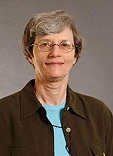
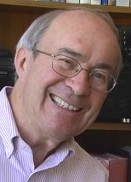
In 1980 Am. astronomers Susan Wyckoff and Peter A. Wehinger (1938-2015) of Germany discover a nebulous region around 3C 273, becoming the first known quasar, indicating that it might be in the center of a galaxy; Timothy J. Pearson et al. track a glowing blob ejected by the quasar from July 1977 to July 1980, and calculate an apparent speed of 9.6c, but reduce it to a real speed of 0.995c.
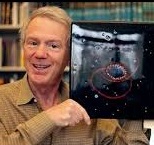
In 1981 Am. astronomers Robert P. Kirshner (1949-) of Harvard U., Augustus Oemler Jr. of Yale U., and Paul L. Schechter and Stephen A. Schectman of Mount Wilson and Las Campanas Observatories discover the spherical giant Bootes (Boötes) (Great) Void of 330M l.y. diam. in the constellation Bootes.
In 1981 the Vatican Observatory Research Group is founded in Tucson, Ariz. to collect astronomical data and send it to the Vatican Observatory in Castel Gandolfo, Italy (founded 1891), where the skies around Rome are too bright for good observation - we'll prove the Earth is the center of the Solar System yet?



In 1984 French astrophysicist Andre Fernand Brahic (1942-2016), French astrophysicist Patrice Jean Emmanuel Bouchet de Puyraimond (1953-), U.S. astronomer William B. Hubbard et al. discover a partial ring around Neptune during a star occultation, leading to the discovery of five principal rings of Neptune, incl. Liberte, Egalite, and Fraternite, parts of the Adams Ring; meanwhile Indian astrophysicist Jagadish Chandra "J.C." Bhattacharyya (1930-2012) et al. of the Indian Inst. of Astrophysics discover two new rings of Saturn.
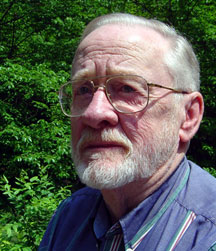

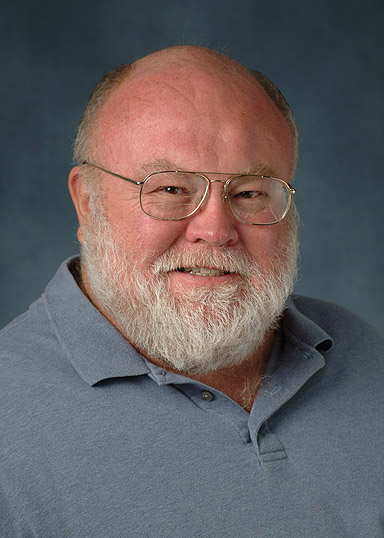
In 1984 the Sun's possible dim low-mass red or white dwarf star hidden companion Nemesis, orbiting at 50K-100K AU is proposed by Am. paleontologists David M. Raup (1933-) and J. John Sepkoski Jr. (1948-99) to explain an alleged 27M-y. cycle in mass extinctions; there's 16M years left before the next peak in the cycle; in 2010 Adrian L. Melott of the U. of Kan. et al. point out that if Nemesis existed its orbital period would change by 20%-50% due to gravitational attraction of nearby stars, killing the theory.
The astronomical Out of Africa, or, The Search for Black Holes? In May 1994 astronomers at the Space Telescope Science Inst. in Baltimore, Md. report seeing a black hole at the center of elliptical galaxy M87 in the Virgo Cluster, about 50M l.y. from Earth; the disc of matter surrounding the small intense source of light is rotating at 1.2M mph, corresponding to an object containing 3B Sun masses.
On July 16-22, 1994 20+ fragments from Comet Shoemaker-Levy 9 hit Jupiter, causing the largest explosion yet witnessed by astronomers in the Solar System.


On July 23, 1995 Denver, Colo-born amateur astronomer Thomas J. "Tom" Bopp (1949-) and Japanese-born Am. prof. astronomer Alan Hale (1958-) discover Comet Hale-Bopp (C/1995 O1), AKA "The Great Comet of 1997"; as the comet reaches its brightest point, Bopp's brother and sister-in-law are killed in a car accident after photographing it.

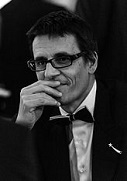
In 1995 Swiss astronomers Michel G.E. Mayor (1942-) and Didier Queloz (1966-) of the U. of Geneva announce 51 Pegasi b (AKA Helvetios), the first planet found orbiting a star other than the Sun (51 Pegasi) 50.9 l.y. from Earth after developing a technique to detect it through subtle distortions in the star's emissions; by 2009 350+ other extrasolar planets are discovered, with none proved to be habitable (until ?).
In 1997 astronomers observe a black hole in NGC 4486B, a small elliptical satellite galaxy of M87, and speculation that the core of the Milky Way galaxy is a black hole becomes rampant - therefore we all owe everything to a black hole?




In Jan. 1998 the Accelerating expansion of the Universe is discovered by two independent projects, the Supernova Cosmology Project and the High-Z Supernova Search; Science mag. names it the "Breakthrough of the Year for 1998"; the Supernova Cosmology Project led by Am. astrophysicist Saul Perlmutter (1959-) of Lawrence Berkeley Nat. Lab and the independent High-Z Supernova Search Team led by Am. astrophysicist Brian Paul Schmidt (1967-) of Mount Stromio Observatory in Australia and Am. astronomer Nicholas B. Suntzeff (1952-) of the Cerro Tololo Inter-Am. Observatory in Chile use observations of supernovae to suggest that the expansion of the Universe is accelerating, causing Am. astrophysicist Adam Guy Riess (1969-) of NASA's Space Telescope Science Inst. to postulate the existence of dark energy or antigravity, theorizing that most of the energy of the Universe is contained in empty space, bringing back Einstein's cosmological constant, which he had called his biggest mistake?; Perlmutter, Riess, and Schmidt go on to share the 2011 Nobel Physics Prize.
On May 17, 1999 SETI@Home is launched to search space for signs of ETs, becoming the first attempt to use distributed Internet PCs power; in 2002 it becomes BOINC; by 2009 it has 2.5M users giving a total of seven petaflops of computing power.
On Jan. 14, 2000 studies using the Chandra X-Ray Observatory reveal that the pervasive X-ray background of the Universe is caused by black holes near the centers of most galaxies.
On Sept. 3, 2000 the Very Large Telescope (VLT) in Cerro Paranal, Chile begins operation, consisting of four 8.2m (323 in.) mirrors, each with its own name (Antu, Kueyen, Melipal, and Yepun); they initially operate independently, but are linked with interferometry in 2001.
By the year 2001 astronomers have discovered 30 suspected black holes in space, but the evidence remains circumstantial.
On Jan. 10, 2001 astronomers report the discovery of a giant planetlike object more than 17x the size of Jupiter orbiting a Sun-like star in the constellation Serpens, 123 l.y. away - the Serpens people are coming?
On Nov. 27, 2001 scientists using the Hubble Space Telescope announce the detection of the first star other than the Sun with an orbiting planet with a gas atmosphere, in the constellation Pegasus 150 l.y. away from Earth.
In 2001 Guillermo Gonzales of the U.S. pub. a theory that the Solar System is in the Galactic Habitable Zone, a narrow ring on the midplane of the Milky Way that is the only region where the conditions for life can exist; further, that the Earth is in an ideal place for the discovery of natural laws and the structure of the Milky Way Galaxy and the Universe.

In 2003 2.5km-diam. Eris, a Solar System dwarf planet 27% more massive than Pluto is discovered by Michael E. "Mike" Brown (1965-) of Palomar Observatory, causing Pluto's status as a planet to be reconsidered, and leading to its demotion to dwarf planet.
In 2003 UCLA astronomer Andrea Ghez discovers a supermassive black hole at the center of the Milky Way Galaxy, leading to the conclusion that most galaxies also have them, and that they both destroy and create stars, determining their structure and evolution.
In 2005 Asteroid 87 Sylvia (ith largest in the asteroid belt) is found to have two moons, becoming the first found with more than one.

On Feb. 2, 2006 German astronomers report that icy ball 2003 UB313 in the Kuiper Belt (nicknamed Xena, then formally named Eris, the largest object discovered orbiting the Sun since Neptune in 1846 is 1,860 mi., 30% wider than Pluto (1.4K mi.), causing astronomers, led by U.S. astrophysicist Neil deGrasse Tyson (1958-) to begin questioning the status of Pluto as a planet; in Aug. the Internat. Astronomical Union (IAU) decides that Pluto is no longer a planet, but "dwarf planet" #13430, leaving Sol with only eight planets; Pluto joins Ceres and Xena as Sol's three dwarf planets; the word "plutoed" is coined, meaning demoted or devalued; on June 11, 2008 the IAU announces that similar distant bodies in the Solar System will be called "plutoids".
In Sept. 2006 the new planet HAT-P-1 is announced in the constellation Lacerto 450 l.y. from Earth, becoming the biggest known planet, with a density less than water.
On Feb. 2, 2007 the first "sniffs of air" of two huge distant planets, incl. HD209458b (900T mi. from Earth) by NASA's Spitzer Space Telescope cause surprise by the absence of water in their atmospheres.
On Apr. 24, 2007 astronomers report finding potentially Earth-like Planet 581c a mere 20.5 l.y. (120T mi.) away in Libra orbiting a dim red dwarf star (like 80% of the stars near Earth); surface temp range is 34-124F.
On Apr. 26, 2007 the first flight of NASA's Stratospheric Observatory for Infrared Astronomy (SOFIA) takes off from Waco, Tex.
In Apr. 2008 astronomers discover a storm on Saturn's moon Titan the size of India.
In Dec. 2008 Alexey Vikhlinin announces that observations from the Chandra X-Ray Observatory indicate that dark energy, which fights gravity to cause the Universe to keep expanding also keeps clusters of 1K or more bright galaxies from getting too big.
In 2008 the Dark Flow of billions of stars racing towards the edge of the observable Universe is discovered by Harald Ebeling of the U. of Hawaii and Dale Kocevski of UC Santa Cruz.
On Apr. 21, 2009 Swiss and French scientists from the European Southern Observatory in Chile led by Michel Mayor announce the most Earth-sized and temperate planet yet found beyond the Solar System, #4 orbiting Gliese 581, a dim red star 21 l.y. away, becoming the first of 340+ planets discovered since 1995 that might be able to support life.
On July 20, 2009 Australian amateur astronomer Anthony Wesley alerts NASA to the presence of a new scar on Jupiter's atmosphere on July 19, caused by an unseen object hitting it, which turns out to be a Titanic-sized asteroid - Bernie Madoff's gigabuck loot capsule?
On July 26, 2009 Green Pea Galaxies that form stars 10x faster than the Milky Way despite being 10x smaller and 100x less massive are discovered by amateur astronomers.
On Aug. 12, 2009 astronomers announce the discovery of WASP-17, a planet that orbits a star 1K l.y. from Earth in a direction backward compared to the rotation of the host star, becoming the first-ever.
In Aug. 2009 astronomers discover an interplanetary smash-up around young star HD 172555, where an object the size of Earth's Moon slams into a planet the size of Mercury.
On Sept. 16, 2009 Laboratoire d'Astrophysique in Marseille, France announces the discovery of the first rocky world beyond the Solar System, CoRoT-7b.
On Oct. 3, 2009 Anne Verbiscer of the U. of Va. et al. pub. an article in Nature announcing the discovery of a new nearly invisible ring around Saturn.
In Oct. 2009 Geophysical Research Letters reveals that a vertical hole on the Moon has been discovered that's as big as a city block and as deep as a modest skyscraper.
In Nov. 2009 Sasha Kashlinky et al. of the Goddard Space Flight Center in Md. announce that they believe that something big beyond the visible edge of the Universe exists that is causing 1K galaxy cluters to stream toward it at high speed.
On Dec. 14, 2009 the NASA Wide-field Infrared Survey Explorer (WISE) is launched from Vanderberg AFB, going on to perform an all-sky astronomical survey in Earth orbit that helps discover the first Y Dwarf and Earth trojan asteroid before being placed into hibernation in Feb. 2011.
In 2009 Wasp-18b, a "hot Jupiter" planet orbiting the star Wasp-18 330 l.y. from Earth is discovered, upending the physicists' understanding of celestial mechanics because it orbits so close that it should have been consumed by the star in less than 1M years.
On Jan. 10, 2010 Astrophysical Journal Letters pub. an article explaining the mysterious Space Ribbon at the outer boundary of the Solar System as a reflection of solar wind particles by a galactic magnetic field.
On Jan. 14, 2010 William Peterson of the U. of Iowa et al. pub. an article in Nature reporting the detection of the first magnetic field from a star other than the Sun, a giant magnetic loop sweeping out from the Algol binary pair 93 l.y. from Earth.
On Feb. 4, 2010 the Hubble Space Telescope reveals a weird bright spot on Pluto near the equator, perhaps caused by carbon monoxide frost.
On Feb. 11, 2010 NASA launches the Solar Dynamics Laboratory to observe the Sun for 5+ years, producing new high-detail images incl. extreme closeups of surface activity.
On Mar. 27, 2010 Universe Today pub. an article by Matthew Hayes announcing that observations with the HAWK-I telescope camera show that 90% of galaxies have gone undetected.
On Apr. 13, 2010 the RAS Nat. Astronomy Meeting in Scotland announces that a new group of 27 exoplanets contains six with retrograde orbits; 452 exoplanets have been identified.
On June 7, 2010 Steve Squyres et al. of Cornell U. announce that the rock outcrop Comanche on Husband Hill near Home Plate Plateau on Mars show evidence of a past wet non-acidic environment that may have been favorable for life.
On June 14, 2010 scientists at the Geophysical Lab of Carnegie U. announce that the water content of the Moon may be up to 5 parts per million, two orders of magnitude higher than previously thought.
On July 22, 2010 astrophysicist Paul Crowther et al. discover R136a1, the most massive star yet discovered, which may once have weighted 320 solar masses.
On July 23, 2010 Buckyballs are detected by Jan Cami of the U. of West Ontario 6.5K l.y. from Earth in the cosmic dust of Tc 1.
On July 23, 2010 it is announced that 100+ Earth-like planets have been discovered in the past few weeks via the Kepler space telescope; scientists believe there might be 100M such planets in the Milky Way.
On Aug. 24, 2010 researchers at the European Science Observatory announce the discovery of the "richest" system of exoplanets yet found, five planets orbiting star HD 10180, 127 l.y. away in the southern constellation Hydrus.
On Sept. 17, 2010 David Grennan of Dublin, Ireland becomes the first amateur astronomer to discover a supernova.
In Sept. 2010 astronomers announce the discovery of Gliese 581g (20 l.y. from Earth), the first exoplanet that can support liquid water and hence potentially life.
On Oct. 14, 2010 Mark Brodwin of the Harvard-Smithsonian Center for Astrophysics pub. a paper in Astrophysical Journal announcing the discovery of a record galaxy cluster with 800T Suns and hundreds of galaxies 7B l.y. from Earth.
On Nov. 10, 2010 the VIRUS-W spectograph sees "first light" at the Harlan J. Smith Telescope in Tex. with images of a spiral galaxy 30M l.y. from Earth.
On Nov. 18, 2010 Rainer Klement of the Max Planck Inst. announces the discovery of the first planet of extragalactic origin in the Milky Way galaxy; still no planets outside it.
On Nov. 25, 2010 NASA's Cassini probe discovers oxygen on Saturn's moon Rhea, becoming the first outside Earth.
On Dec. 8, 2010 a team led by MIT verifies the discovery of the first planet with a carbon-enriched atmosphere, WASP-12b, 1.2K l.y. from Earth.
On Jan. 21, 2011 scientists at the Max Planck Inst. in Munich and UTA pub. their finding that there is no direct link between black holes and dark matter.
On Jan. 27, 2011 Nature pub. an article announcing the finding of the most distant object yet seen in the Universe, at a distance of 13.2B l.y.
In Jan. 2011scientists at Stanford U. detect the first-ever gamma-ray flares coming from the Crab Nebula (M1).
In Jan. 2011 Larry Taylor et al. discover that lunar water may have originated from comets that smashed into it soon after it formed.
In Feb. 2011 NASA's Kepler team announces the discovery of KOI 326.01, the most Earth-like planet exoplanet yet found; too bad, in Mar. they realize they made an error in the star's brightness, and demote it.
On Apr. 4, 2011 George Cody, Cornel Alexander, and Larry Nitler of Carnegie Inst. pub. research proving that complex organic carbon-containing solids were made from formaldehyde in the early Solar System.
In Apr. 2011 a NASA satellite spots a stellar explosion more than 13B l.y. from Earth, becoming the most distant ever detected (until ?).
On June 16, 2011 scientists at George Mason U. reveal that solar storms are caused by a giant magnetic rope.
On July 6, 2011 scientists announce the discovery of the first molecules of hydrogen peroxide in space - astronauts can all go blonde?
On July 15, 2011 NASA's Dawn spacecraft becomes the first probe to enter an orbit around an object in the main asteroid belt between Mars and Jupiter, returning close-up images of the giant asteroid Vesta.
On July 27, 2011 astronomers announce the discovery of the first Earth Trojan asteroid, that shares Earth's orbit around the Sun, named 2010 TK7.
On Aug. 1, 2011 the European Space Agency's Herschel space observatory detects the first oxygen molecules in space in Orion.
On Aug. 4, 2011 NASA announces the possible discovery of water on Mars, most likely salty.
On Oct. 31, 2021 the infrared James Webb Space Telescope (formerly the Next Generation Space Telescope) is launched by NASA as a successor to the Hubble Space Telescope; it incl. the daisy-shaped star shade to fly 15K mi. ahead of it and block light to allow distant planets to be searched for.
On Nov. 11, 2011 U.S. scientists announce the discovery of two interstellar gas clouds containing only original elements from the Big Bang.
On Dec. 20, 2011 NASA scientists announce the discovery of the smallest most Earth-size alien worlds yet, Kepler-20e and Kepler-20f.
In 2012 Pluto's moons Kerberos and Styx are discovered by using the Hubble Space Telescope.
On May 29, 2013 radar data of Asteroid 1998 QE2 3.75M (6M km) from Earth reveals that it has its own moon.
On May 30, 2013 researchers from Purdue U. pub. a paper in Science confirming the theory that mascons on the Moon are caused by ancient massive asteroid impacts.
On June 7, 2013 astronomers using the Atacama Large Millimeter/Submillimeter Array (ALMA) pub. an article in Science announcing the first observation of a "dust trap" around a young star that generates planets, comets, etc.
On June 25, 2013 astronomers announce that Gliese 667C has 3-4 potentially habitable planets orbiting a triple-star system 22 l.y. from Earth, becoming a first.
On July 4, 2013 astronomers Hongsheng Zhao et al. present a new theory of gravity at the U. of St. Andrews, claiming that dark matter might not exist, and that a mysterious unknown force is at work.
On July 16, 2013 Christof Wetterich of the U. of Heidelberg pub. an article proposing a new cosmology in which the Universe isn't expanding but the mass of everything has been increasing, making the Big Bang singularity unnecessary.
On Sept. 8-13, 2013 the 2013 European Planetary Science Congress presents evidence that Mars was quite wet once, and had two wet eras.
On Nov. 4, 2013 Erik Petigura of UCB releases a study that finds that based on data from the Kepler space telescope, the Milky Way galaxy is home to 10B potentially habitable worlds.
In Feb. 2014 NASA's Chandra X-Ray Observatory detects low-energy X-rays emanating from Pluto, detecting ditto 3x more by Aug. 2015.
On Mar. 17, 2014 using data from the BICEP2 microwave telescope at the South Pole, physicists at the Harvard-Smithsonian Center for Astrophysics announce the discovery of gravity waves from the Big Bang, proving the Theory of Inflation; William Jones of Princeton U. et al. announce that the conclusion overreaches the data; it's really just ashes from an exploding star?
On Apr. 17, 2014 Garry Taylor and Helen Connaris of St. Andrews U. announce the discovery of Kepler-186f, the most Earth-like planet yet discovered, and potentially habitable.
On Apr. 30 , 2014 scientists using ESO's Very Large Telescope (VOT) announce the first determination of the rotation rate of an expoplanet, Beta Pictoris b (8 hours).
On Oct. 20, 2014 George Fraser et al. of the U. of Leicester pub. an article in Monthly Notices of the Royal Astronomical Society announcing the first detection of axions, Dark Matter particle candidates by the XMM-Newton Observatory.
In Oct. 2014 after protests by nativists who claim they want to build it on sacred land, the $1.5B Thirty Meter Telescope (TMT) on Mauna Kea, Hawaii is delayed by the courts, with each new attempt to build it being blocked by more protests (Apr. 2 and June 24, 2015); in Dec. 2015 the Hawaiian Supreme Court invalidates the building permits.
On Nov. 27, 2014 Daniel Baker of the U. of Colo. pub. an article in Nature reporting the discovery of a boundary layer in the Van Allen belts that blocks "killer electrons".
On Apr. 10, 2015 U. of Ariz. astronomer Peter A. Milne et al. pub. an article in Astrophysical Journal announcing that Type Ia supernovae, used as distance markers actually fall into different populations, modifying the distances and throwing off the calculation of Universe expansion.
On Sept. 28, 2015 NASA scientist Lujendra Ohja pub. an article in Nature Geoscience announces "smoking gun" evidence for liquid water on Mars. in tear-stain lineae.
In 2015 the F-type main-sequence star KIC 8462852 is announced by citizen scientists of the Planet Hunters project, becoming known as Tabby's Star or Boyajian's Star after LSU astronomer Tabetha Suzanne Boyajian (1980-); it has unusual light fluctuations of up to 22%.
In 2015 astronomers Istvan Szapudi et al. of the U. of Hawaii discover the Supervoid, a spherical blob measuring 1.8B l-y. across.
On Jan. 20, 2016 Konstantin Batygin and Mike Brown of of Caltech announce a hypothetical (unobserved) 9th solar planet with a highly elliptical orbit 20x the distance to Neptune, with a year of 10K-20K Earth years.
On Feb. 11, 2016 David Reitze of the Laser Interferometer Gravitational-Wave Observatory (LIGO) announces the detection of gravitational waves from the collision of two black holes 1.3B l-y. away, also confirming the existence of binary black hole systems; too bad, another team fails to confirm it; after they get confirmation, the 2017 Nobel Physics Prize is awarded to the discoverers.
On Feb. 17, 2016 (3:45 a.m. EST) the NASA ASTRO-H AKA Hitomi (Jap. "pupil of the eye") X-ray space observatory takes off to study black holes and galaxy clusters.
On Mar. 21, 2016 P.R. Alexander et al. pub. an article in Nature that speculates that neutron star mergers may be the only way to form many elements heavier than zinc.
On May 10, 2016 NASA scientists announce tht the Kepler Space Telescope has discovered 1,284 certified planets to add to the 984 already confirmed, plus 1,327 likely planets; nine are Goldilocks Zone planets, able to support liquid water and possibly life.
On Nov. 23, 2016 NASA scientists report the discovery of an underground ice layer on Mars big enough to cover N.M.
On Jan. 11, 2017 an article is pub. in Science Advances announcing that analysis of samples brought back by the 1971 Apollo 14 mission indicate that the Moon is at least 4.51B years old, 40M-140M older than previously thought.
On Feb. 22, 2017 astronomers announce four additional planets around TRAPPIST-1, an ultra-cool dwarf star about the size of Jupiter 39.5 l.y. from the Sun in the constellation Aquarius, yielding a record of seven temperate terrestrial planets.
On June 20, 2017 NASA announces the discovery of 10 new rocky Earth-sized planets with water by the Kepler spacecraft, bringing the total to 50.
In Aug. 2017 NASA's Transiting Exoplanet Survey Satellite (TESS) is launched to survey the brightest stars near Earth for transiting exoplanets over a 2-year period.
On Sept. 20, 2017 a German-led group of astronomers pub. an article in Nature announcing Astroid 228P, the first known binary asteroid also classified as a comet, orbiting between Mars and Jupiter, discovered using the NASA/ESA Hubble Space Telescope.
On Sept. 22, 2017 the IceCube Neutrino Observatory at the South Pole detects a neutrino, tracing it to blazar TXS 0506-056 off the shoulder of Constellation Orion 3.5B l.y. from Earth, suggesting that blazars might be sources of cosmic rays.
On Nov. 20, 2017 NASA scientists pub. an article in Nature announcing the discovery in Oct. by Robert Weryk of the U. of Hawaii of the asteroid Yo Mama, er, Oumuamua (11/2017 U1) (pr. ooh-mooh-ah-mooh-ah), a 400m-long rocky cigar-shaped object with a reddish hue and 10.1 aspect ratio, becoming the first confirmed visiting object from another star; Harvard astronomer Avi Loeb claims that there's a "serious possibility" that "Oumuamua was an alien spacecraft", a light sail.
On Dec. 14, 2017 NASA announces the first solar system other than our own with eight planets, Kepler-90; planet #8 Kepler-90i was discovered with AI software developed by Google.
On June 27, 2018 Tim Schmidt of the U. of New South Wales et al. pub a study claiming that the space between stars is full of electromagnetic radiation and gloopy aliphatic carbons that can stick to spaceship windshields.
On July 12, 2018 MIT scientists pub. an article in Science announcing that 9.5 years of observations of neutrinos by the IceCube detector in Antarctica has detected a blazar 3.7B l.y. away, confirming it as the source of cosmic rays, becoming the first use of a neutron detector to locate an object in space; on July 16 they pub. an article in Nature Physics announcing that there is no Lorentz violation in neutrinos.
On July 25, 2018 an article is pub. in Science announcing the discovery of the first "stable body of liquid water" on Mars by the Mars Express spacecraft, a 12.-5 mi. underground lake below the S polar ice cap.
On Aug. 19, 2018 MIT physicists David Kaiser, Alan Guth et al. pub. an article in Physical Review Letters reporting correlations among 30K+ pairs of entagled photons from two distant quasars 7.8B and 12.2B y.o., helping confirm quantum entanglement.
In 2018 development begins on the Pulsed All-Sky Near-Infrared Optical SETI (PANOSETI), two telescopes at Lick Observatory that are planned on growing to hundreds to scan the entire sky for alien laser signals.
On Jan. 10, 2019 after first detecting them in 2016, scientists detect powerful new energy bursts from deep space, giving believers in ET life a boost until the source is traced to two colliding stars.
On Jan. 24, 2019 David Kring of the Lunar and Planetary Inst., Munir Humayun of Fla. State U. et al. pub. a study in Earth and Planetary Science Letters, announcing the discovery of a 2-cm chip embedded in Moon rocks returned by Apollo astronauts that is actually a 4B-y.-o. fragment of Earth - more proof that the Apollo Moon landings were fake?
On Apr. 10 , 2019 scientists from the Event Horizon Telescope release the first-ever image of a black hole, in galaxy M87 55M l.-y. from Earth.
On Aug. 5, 2020 NASA announces that it's reassesed nicknames for space objects to week out insensitive and bigoted names, such as Eskimo Nebula and Siamese Twin Galaxy; in 2019 it renamed the asteroid Ultima Thule to Arrokoth because of Nazi associations.
On Aug. 16, 2020 Asteroid 2020 QG passes the Earth's surface at a distance of 1,830 mi. (2,950 km), becoming the closest Earth-passing asteroid yet detected, which was done after it passed.
On Sept. 14, 2020 astronomers using the James Clerk Maxwell Telescope and the Atacama Large Millimeter Array incl. Jane S. Greaves, Anita M.S. Richards, William Bains, Paul B. Rimmer et al. pub. an article in Nature Astronomy announcing the detection of phosphine in the atmosphere of Venus, raising hopes of the existence of bacterial life.
On Nov. 13, 2020 (17:20 UTC) (Fri.) Asteroid 2020 VT4 passes within 230 mi. (378 km) of Earth's surface, becoming a record, beating the previous record of Asteroid 2020 QG that whizzed by at a distance of 1,830 mi. (2,950 km) in Aug.